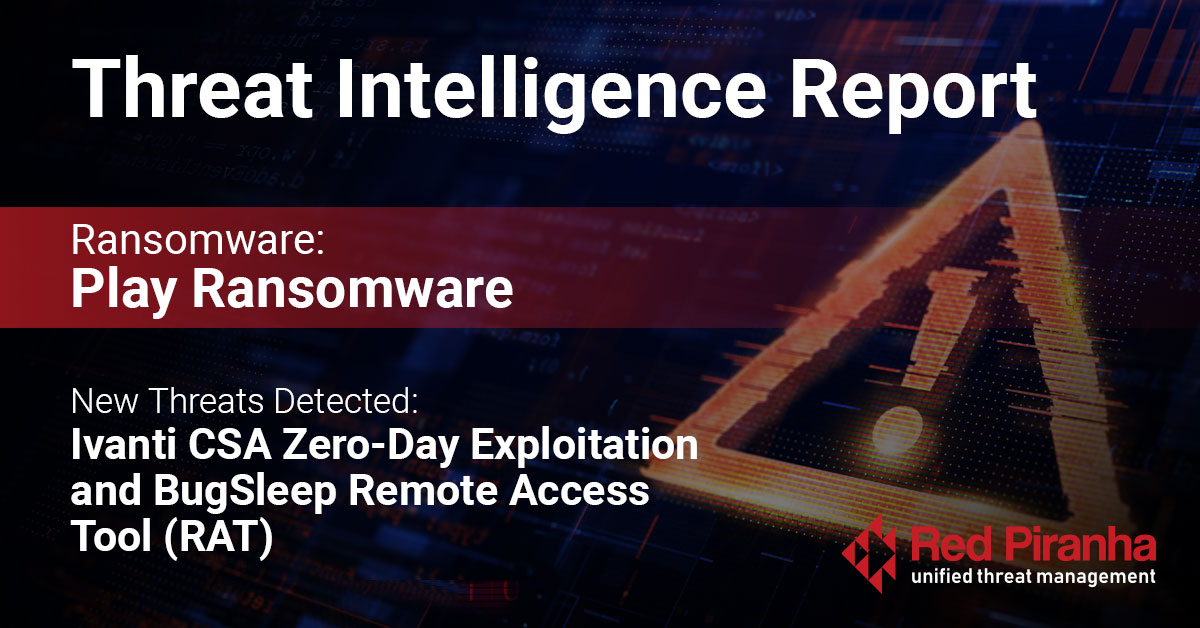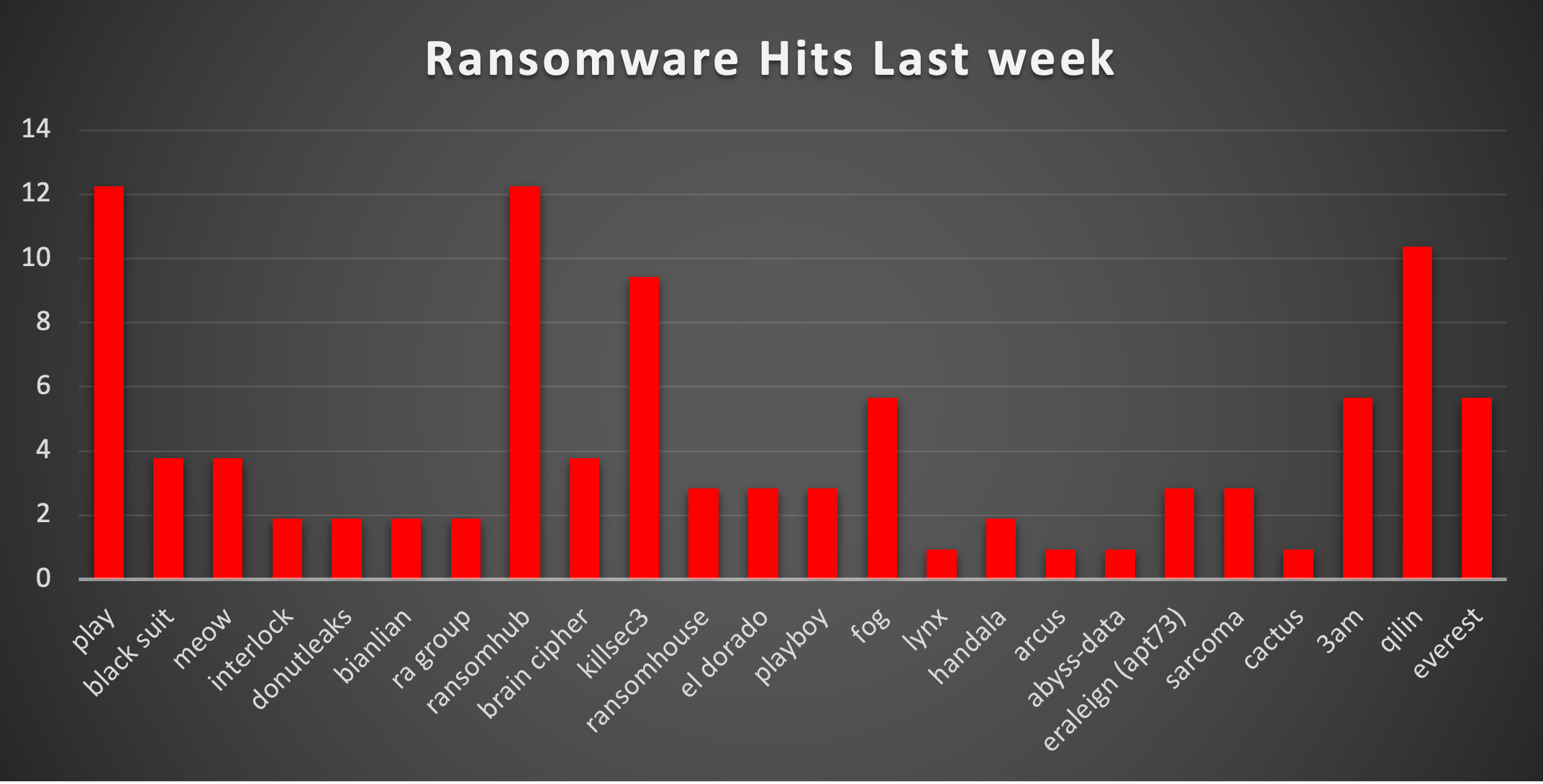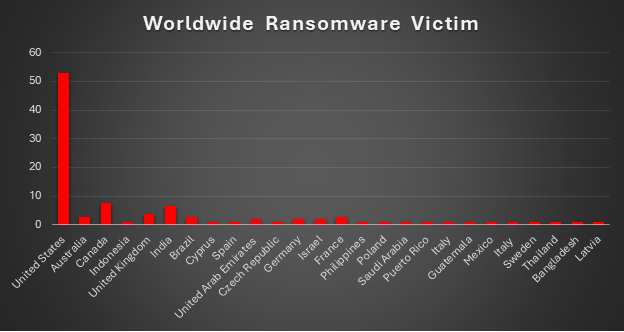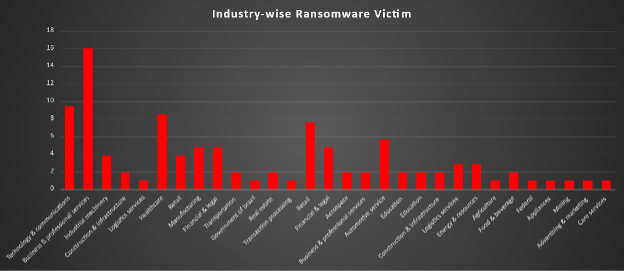
| New Threat Detection Added | 2 (Ivanti CSA Zero-Day Exploitation and BugSleep Remote Access Tool (RAT)) |
| New Threat Protections | 137 |
Weekly Detected Threats
The following threats were added to Crystal Eye XDR this week:
Threat name: | Ivanti CSA Zero-Day Exploitation | ||||||||||||||||||
Advanced threat actors have exploited multiple zero-day vulnerabilities in Ivanti's Cloud Services Appliance (CSA), including CVE-2024-8190, CVE-2024-8963, and CVE-2024-9380. These vulnerabilities allow attackers to perform unauthorised actions such as path traversal and command injection, leading to potential system compromise. The exploitation of these flaws underscores the importance of timely patching and robust security measures. | |||||||||||||||||||
Threat Protected: | 01 | ||||||||||||||||||
Rule Set Type: |
| ||||||||||||||||||
Class Type: | Attempted-admin | ||||||||||||||||||
Kill Chain: |
| ||||||||||||||||||
Threat name: | BugSleep Remote Access Tool (RAT) | ||||||||||||||||||||||||
BugSleep is a sophisticated Remote Access Tool (RAT) that provides attackers with reverse shell capabilities and file input/output operations on compromised endpoints. It employs a custom Command-and-Control (C2) protocol over plain TCP sockets, utilizing a pseudo-Type Length Value (TLV) structure for communication. The malware encrypts payloads by subtracting a static value from each byte, enhancing its stealth. BugSleep's functionalities include reverse shell access, file manipulation, and persistence mechanisms, posing significant risks to affected systems. | |||||||||||||||||||||||||
Threat Protected: | 02 | ||||||||||||||||||||||||
Rule Set Type: |
| ||||||||||||||||||||||||
Class Type: | Attempted-admin | ||||||||||||||||||||||||
Kill Chain: |
| ||||||||||||||||||||||||
Known exploited vulnerabilities (Week 5 - October 2024)
Threat | CVSS | Description | |
CVE-2024-51567 | 10.0 (Critical) | CyberPanel pre-auth remote code execution vulnerability |
For more information, please visit the Red Piranha Forum:
https://forum.redpiranha.net/t/known-exploited-vulnerabilities-catalog-5th-week-of-october-2024/519
Updated Malware Signatures (Week 5 - October 2024)
Threat | Description | |
Zeus | Also known as Zbot, this malware is primarily designed to steal banking credentials. | |
Lumma Stealer | A type of malware classified as an information stealer. Its primary purpose is to steal sensitive information from infected systems, including but not limited to credentials, financial information, browser data, and potentially other personal or confidential information. | |
Vidar | A stealer designed to collect sensitive data from infected machines. It usually targets Windows-based machines and is spread through email attachments or downloads from compromised websites. |
| Ransomware Report | |
The Red Piranha Team actively monitors the dark web and other sources to identify organisations globally affected by ransomware attacks. In the past week, we uncovered numerous ransomware incidents across various groups, highlighting the ongoing and pervasive nature of these cyber threats. Below is the breakdown of ransomware group activities for this period. | |
| Name of Ransomware Group | Percentage of new Victims last week |
12.26% | |
BlackSuit | 3.77% |
Meow | 3.77% |
Interlock | 1.89% |
Donut Leaks | 1.89% |
Bianlian | 1.89% |
RA Group | 1.89% |
12.26% | |
Brain Cipher | 3.77% |
Killsec | 9.43% |
RansomHouse | 2.83% |
El Dorado | 2.83% |
Playboy | 2.83% |
5.66% | |
Lynx | 0.94% |
Handala | 1.89% |
Arcus | 0.94% |
Abyss-data | 0.94% |
Eraleign (APT73) | 2.83% |
Sarcoma | 2.83% |
Cactus | 0.94% |
3AM | 5.66% |
Qilin | 10.38% |
Everest | 5.66% |

Play Ransomware Analysis
Play ransomware, emerging as one of the most active threat actors with 12.26% of total attacks in our recent analysis, has gained significant attention due to its collaboration with North Korean state-sponsored actors. This partnership marks a concerning evolution in ransomware operations, blending cybercrime with state-sponsored capabilities.
Play Ransomware: North Korean State Actor Connections
Key Connection Points
- Infrastructure Overlap
- Shared Command-and-Control (C2) infrastructure with North Korean APT groups
- Common IP addresses used in attacks (68.235.184[.]54)
- Identical server configurations and malware deployment patterns
- Technical Similarities
- Use of Tactics, Techniques, and Procedures (TTPs) similar to UNC4899
- Deployment of DPRK-linked malware alongside Play ransomware
- Common exploitation of vulnerabilities like ProxyNotShell and OWASSRF
- Attack Pattern Correlations
- Coordinated targeting healthcare organisations
- Similar victim selection methodology
- Synchronised timing of attacks
Detailed TTPs for Play Ransomware with North Korean Connection
- Initial Access and Exploitation:
- Exploits Microsoft Exchange vulnerabilities (ProxyNotShell and OWASSRF)
- Exploits specifically CVE-2022-41082 and CVE-2022-41040
- Targets healthcare sector organisations predominantly
- Deploys web shells for persistent access
- Infrastructure and Operations:
- Shares C2 infrastructure with IP address 68.235.184[.]54
- Connects with UNC4899 operations
- Maintains common Command-and-Control servers
- Deploys shared malware infrastructure
- Post-Exploitation Activities:
- Deploys Cobalt Strike beacons for network control
- Executes PowerShell commands for system manipulation
- Implements BitLocker encryption for data impact
- Performs Volume Shadow Copy Deletion
- Lateral Movement and Persistence:
- Modifies Windows Registry for persistence
- Creates scheduled tasks for maintained access
- Installs malicious services
- Abuses admin shares for movement
- Data Impact and Encryption:
- Uses BitLocker Drive Encryption for file encryption
- Targets system backups systematically
- Deletes volume shadow copies
- Implements secure data destruction methods
- Tool Deployment and Usage:
- Deploys custom web shells for access
- Uses sophisticated PowerShell scripts
- Implements Remote Administration Tools
- Employs shared North Korean malware variants
- Strategic Operations:
- Coordinates synchronised attack timing
- Shares attack infrastructure with DPRK actors
- Focuses on the healthcare sector targeting
- Implements common exploitation techniques
- Command-and-Control:
- Uses shared hosting providers
- Maintains overlapping C2 servers with DPRK operations
- Implements sophisticated proxy mechanisms
- Deploys coordinated control infrastructure
Key Characteristics:
- Emergence: Gained prominence in 2022, showing significant evolution in capabilities and reach
- Infrastructure: Maintains sophisticated infrastructure including leak sites and C2 servers
- Partnership Model: Unique collaboration with state-sponsored actors, particularly North Korean APT groups
- Technical Sophistication: Advanced encryption and evasion capabilities
Modus Operandi:
- Target Selection:
- Focus on high-value organisations
- Strategic targeting of critical infrastructure
- Preference for organizations with cyber insurance
- Attack Methodology:
- Sophisticated initial access techniques
- Advanced lateral movement capabilities
- Implementation of multiple pressure points for ransom payment
- Extortion Tactics:
- Multi-layered extortion approach
- Sophisticated negotiation strategies
- Strategic data leakage for maximum impact
Technical Observations:
- Malware Characteristics:
- Custom-developed encryption algorithms
- Sophisticated anti-analysis capabilities
- Advanced process injection techniques
- Network Infrastructure:
- Distributed Command-and-Control
- Sophisticated proxy mechanisms
- Shared infrastructure with state-sponsored actors
- Evasion Capabilities:
- Advanced anti-debugging features
- Sophisticated process hiding
- Complex obfuscation techniques
MITRE ATT&CK-based Kill Chain for Play Ransomware:
Tactic | Technique ID | Technique Name | ||
Initial Access | T1190 | Exploit Public-Facing Application (Exchange Server) | ||
T1566 | Phishing | |||
T1133 | External Remote Services | |||
T1078 | Valid Accounts | |||
Execution | T1059 | PowerShell | ||
T1059 | Windows Command Shell | |||
T1106 | Native API | |||
T1204 | Malicious File | |||
Persistence | T1505 | Web Shell | ||
T1543 | Create or Modify System Process | |||
T1547 | Registry Run Keys | |||
T1136 | Create Account | |||
Privilege Escalation | T1548 | Abuse Elevation Control Mechanism | ||
T1134 | Access Token Manipulation | |||
T1068 | Exploitation for Privilege Escalation | |||
T1484 | Domain Policy Modification | |||
Defence Evasion | T1562 | Disable or Modify Tools | ||
T1070 | Indicator Removal | |||
T1112 | Modify Registry | |||
T1027 | Obfuscated Files or Information | |||
Credential Access | T1003 | OS Credential Dumping | ||
T1552 | Unsecured Credentials | |||
T1555 | Credentials from Password Stores | |||
T1558 | Steal or Forge Kerberos Tickets | |||
Discovery | T1082 | System Information Discovery | ||
T1087 | Account Discovery | |||
T1083 | File and Directory Discovery | |||
T1018 | Remote System Discovery | |||
Lateral Movement | T1021 | Remote Desktop Protocol | ||
T1021 | SMB/Windows Admin Shares | |||
T1091 | Replication Through Removable Media | |||
T1570 | Lateral Tool Transfer | |||
Collection | T1560 | Archive Collected Data | ||
T1213 | Data from Information Repositories | |||
T1005 | Data from Local System | |||
T1039 | Data from Network Shared Drive | |||
Command-and-Control | T1071.001 | Web Protocols | ||
T1573 | Encrypted Channel | |||
T1090 | Proxy | |||
T1572 | Protocol Tunnelling | |||
Exfiltration | T1041 | Exfiltration Over C2 Channel | ||
T1567 | Exfiltration Over Web Service | |||
T1048 | Exfiltration Over Alternative Protocol | |||
T1029 | Scheduled Transfer | |||
Impact | T1486 | Data Encrypted for Impact | ||
T1489 | Service Stop | |||
T1490 | Inhibit System Recovery | |||
T1485 | Data Destruction |
Indicators of Compromise
SHA256 Hashes
- 243ad5458706e5c836f8eb88a9f67e136f1fa76ed44868217dc995a8c7d07bf7
- 2b254ae6690c9e37fa7d249e8578ee27393e47db1913816b4982867584be713a
- f64dab23c50e3d131abcc1bdbb35ce9d68a34920dd77677730568c24a84411c5
- 99e2ebf8cec6a0cea57e591ac1ca56dd5d505c2c3fc8f4c3da8fb8ad49f1527e
- b4f5d37732272f18206242ccd00f6cad9fbfc12fae9173bb69f53fffeba5553f
- b1ac26dac205973cd1288a38265835eda9b9ff2edc6bd7c6cb9dee4891c9b449
Sliver C2 Server Information
- 172.96.137[.]224
- americajobmail[.]site
Code Signing Certificate Details
SHA256 hash: b4f5d37732272f18206242ccd00f6cad9fbfc12fae9173bb69f53fffeba5553f
Chain: 6e95d94d5d8ed2275559256c5fb5fc6d01da6b46
Issuer: CN=LAMERA CORPORATION LIMITED
NotBefore: 2/10/2022 9:44 PM
NotAfter: 12/31/2039 4:59 PM
Subject: CN=LAMERA CORPORATION LIMITED
Serial: 879fa942f9f097b74fd6f7dabcf1745a
Cert: 6e95d94d5d8ed2275559256c5fb5fc6d01da6b46
SHA256 hash: f64dab23c50e3d131abcc1bdbb35ce9d68a34920dd77677730568c24a84411c5
Chain: 6624c7b8faac176d1c1cb10b03e7ee58a4853f91
Issuer: CN=Tableau Software Inc.
NotBefore: 5/27/2023 11:15 AM
NotAfter: 12/31/2039 4:59 PM
Subject: CN=Tableau Software Inc.
Serial: 76cb5d1e6c2b6895428115705d9ac765
Cert: 6624c7b8faac176d1c1cb10b03e7ee58a4853f91
This list of IoCs may not be the full list managed by Red Piranha and should only be considered a sample list.
|

Name of the affected Industry | Victims Count (%) |
Technology & communications | 9.43% |
Business & professional services | 16.04% |
Industrial machinery | 3.77% |
Construction & infrastructure | 1.89% |
Logistics services | 0.94% |
Healthcare | 8.49% |
Retail | 3.77% |
Manufacturing | 4.72% |
Transportation | 1.89% |
Government of Brazil | 0.94% |
Real estate | 1.89% |
Transaction processing | 0.94% |
Financial & legal | 4.72% |
Aerospace | 1.89% |
Automotive service | 5.66% |
Education | 1.89% |
Logistics services | 2.83% |
Energy & resources | 2.83% |
Agriculture | 0.94% |
Food & beverage | 1.89% |
Federal | 0.94% |
Appliances | 0.94% |
Mining | 0.94% |
Advertising & marketing | 0.94% |
Care services | 0.94% |

Here are essential measures to mitigate the risk of Play ransomware and similar threats:
- Enhanced Exchange Server Security: Implement robust security measures for Microsoft Exchange servers, including regular patching and monitoring, particularly focusing on CVE-2022-41082 and CVE-2022-41040 vulnerabilities that Play ransomware actively exploits.
- Advanced Network Segmentation: Deploy comprehensive network segregation to isolate critical systems and implement strict access controls between segments, limiting the potential spread of ransomware within the network.
- Multi-Factor Authentication: Enforce strong multi-factor authentication across all remote access points and privileged accounts to prevent unauthorised access and lateral movement commonly used by Play ransomware.
- Backup and Recovery Strategy: Maintain secure, encrypted offline backups with regular testing procedures, implementing a 3-2-1 backup strategy to ensure data recovery capabilities in case of encryption.
- Email Security Controls: Deploy advanced email security solutions with robust phishing protection and attachment scanning, as Play ransomware often initiates attacks through phishing campaigns.
- Endpoint Detection and Response: Implement sophisticated EDR solutions to monitor and detect suspicious activities, particularly focusing on PowerShell abuse and unusual encryption behaviours characteristic of Play ransomware.
- Security Awareness Training: Conduct regular security awareness sessions focusing on ransomware threats, phishing identification, and proper security practices to prevent initial compromise.
- Incident Response Planning: Develop and maintain comprehensive incident response plans specifically addressing ransomware scenarios, including regular testing and updates based on Play ransomware's evolving tactics.
